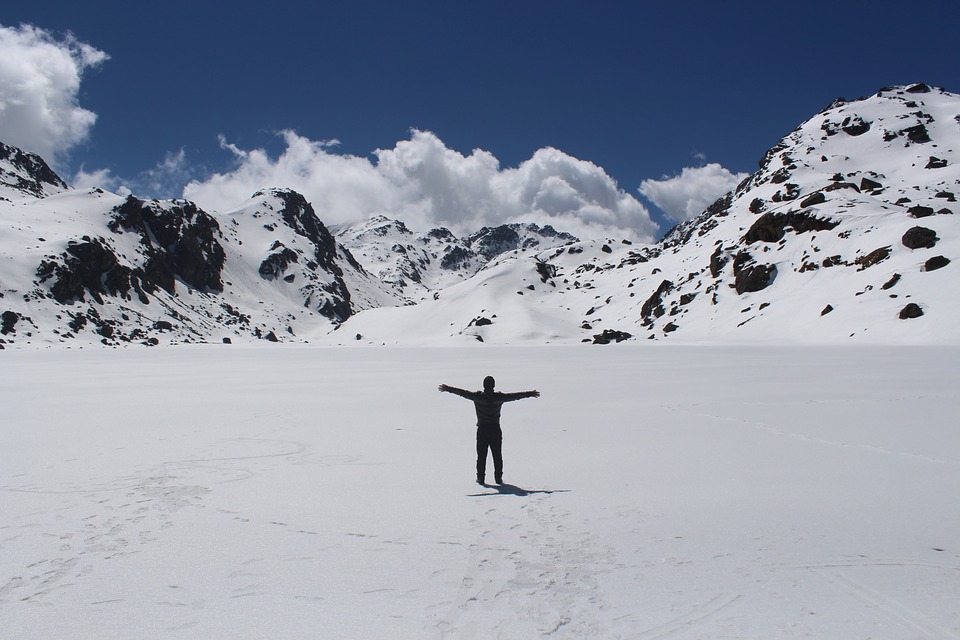Route Update:
Now the vehicle reaches upto Jhinu danda via naya pool, so the trek can be started from there ignoring walking in vehicle road. If the Itinerary goes to Ghandruk, then you can start your trek from Ghandruk directly as you can reach to Ghandruk via vehicle.
Starting Location Update:
Generally trekking agencies starts the trip from Kathmandu. Now if you want to wrap ABC trek in short duration then you can take flight to Pokhara and reach Chhomrong or Ghandruk on same day.
The Annapurna Base Camp journey exemplifies the appeal of the Himalayas, enthralling hikers with its breathtaking scenery and sweeping mountain views. This journey, located in the heart of the Annapurna Sanctuary, provides a rare combination of natural beauty and cultural depth. The route begins at Nayapul and takes travelers past lovely towns, rich rhododendron woods, and terraced farms before climbing gently to the base camp. Trekkers are greeted to breathtaking views of Annapurna, Machapuchare, Hiunchuli, and other snow-capped peaks as they cross the varied terrain. The journey not only shows off the magnificence of the Himalayas, but also introduces visitors to the warm hospitality of the indigenous Gurung and Magar populations who live in picturesque mountain villages along the way.
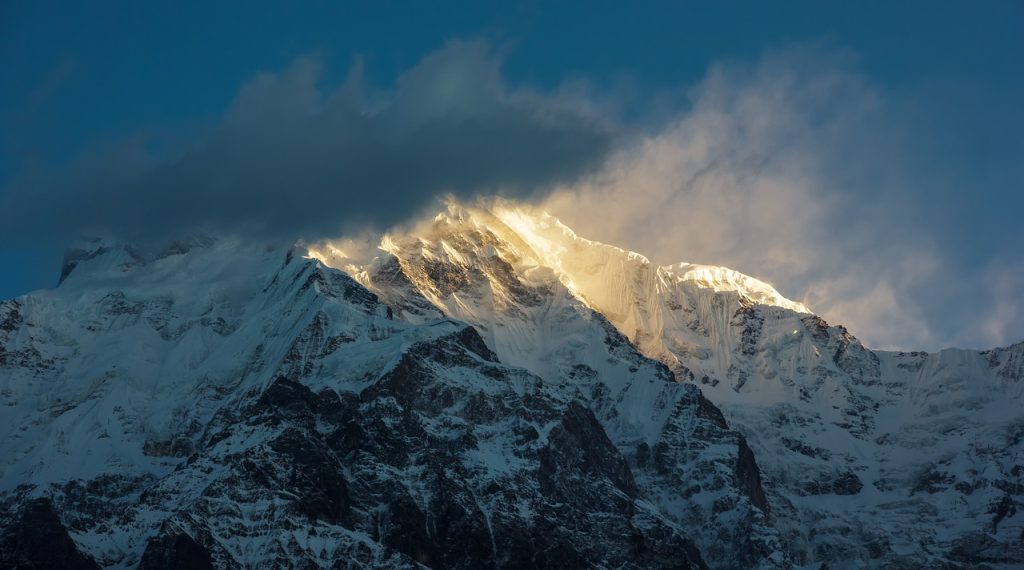
The Annapurna Base Camp Trek normally lasts 7-12 days and is popular not just because of the stunning landscape but also because of the trail’s accessibility. The route is suitable for both novice and expert trekkers, offering a moderate difficulty with plenty of opportunity for acclimatization. The journey offers a transforming experience, allowing travelers to immerse themselves in the raw beauty of the Annapurna region while making friendships with fellow trekkers and the hospitable mountain towns, whether completed in the colorful bloom of spring or the crisp air of autumn.
Best Season To Trek in Annapurna Base Camp
The season you choose has a big impact on your trekking experience at Annapurna Base Camp. Spring (March to May) and fall (September to November) are the best times to embark on this breathtaking tour. The walking routes come alive with vivid rhododendron blossoms throughout the spring season, changing the environment into a kaleidoscope of hues. With temperate temperatures and sunny sky, the weather is usually consistent, affording hikers with amazing vistas of the towering peaks that surround the Annapurna Sanctuary. The routes are also covered with lush foliage, offering a gorgeous scene for tourists passing through the charming towns and terraced farms.
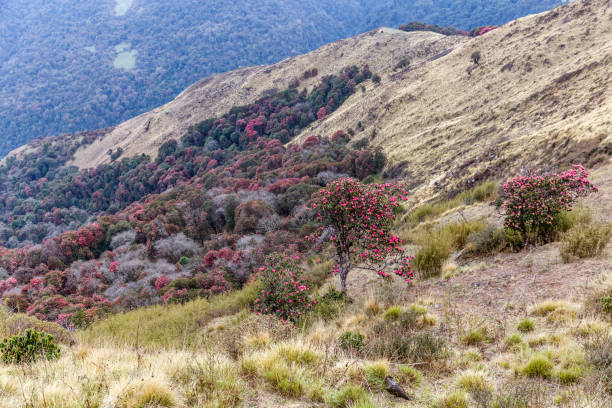
The Annapurna Base Camp trip has sunny sky and a lovely atmosphere in the autumn season. The monsoon rains have stopped, leaving the air crisp and the pathways dry, which improves the whole hiking experience. Autumn visibility is superb, allowing hikers to see the snow-capped peaks, like Annapurna and Machhapuchare, in all their beauty. The mild daytime temperatures and chilly evenings allow for pleasant hiking conditions. Autumn also coincides with local festivals, allowing trekkers to immerse themselves in the region’s cultural celebrations, giving an added depth of richness to the experience. Finally, whether to choose spring or fall is a matter of personal preference, whether one prefers the brilliant hues of spring or the clear, post-monsoon sky of October.
Permits and Regulations
The Annapurna Base Camp walk necessitates the use of special permissions and rules to protect both trekkers’ safety and the preservation of the pristine environment. The Annapurna Conservation Area Permit (ACAP) and the Trekkers’ Information Management System (TIMS) card are required for this journey. The ACAP is intended to aid conservation efforts in the Annapurna area, helping to the long-term management of the fragile ecosystems and unique flora and wildlife found along the trekking paths. The TIMS card, on the other hand, assists in monitoring and ensuring trekkers’ safety by preserving a database of personal information during the route. These permits, which must be obtained in Kathmandu or Pokhara, are required for admission into the Annapurna Conservation Area.
Accommodations and Tea House
The Annapurna Base Camp trek’s accommodations are generally supplied by quaint tea houses that dot the path, giving a unique and immersive experience for trekkers. These teahouses, which are small but cozy lodges, serve as havens for fatigued hikers, providing a place to relax, recharge, and interact with other travelers. Every teahouse has minimal facilities including mattresses with blankets, public dining spaces, and shared restrooms. While the luxury of the facilities varies, the gracious hospitality of the local hosts lends a special flavor to the whole trekking experience.
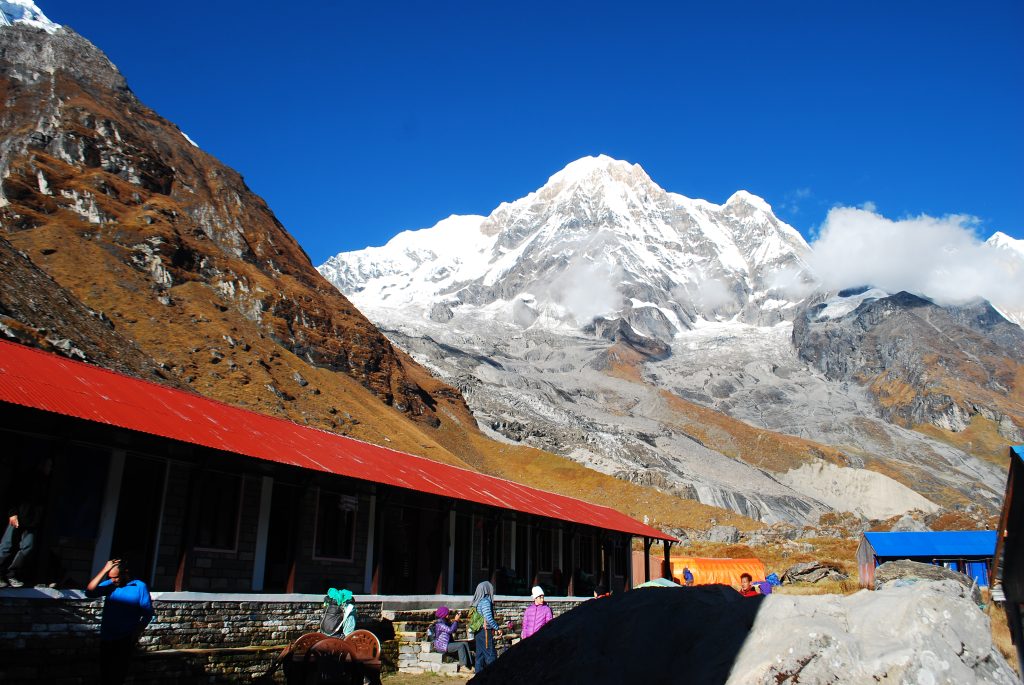
Tea houses along the Annapurna Base Camp path also serve as social hubs where trekkers from all over the globe may share tales, trade tips, and make new connections. The warm atmosphere and companionship contribute to the trek’s sense of community. Tea house meals are often cooked using local ingredients, providing a taste of Nepali cuisine. Trekkers may enjoy traditional meals while taking in the spectacular alpine scenery. The tea house experience is an essential component of the Annapurna Base Camp hike, offering not only a place to relax but also a chance to immerse oneself in the rich culture of Himalayan communities.
Fitness Level Required
The Annapurna Base Camp journey requires a good degree of physical fitness to negotiate the varied terrain and elevations. While the trip is classified moderate, it includes regular ascents and descents that test hikers’ cardiovascular and physical stamina. Regular aerobic workouts, such as hiking, cycling, or jogging, might improve stamina and respiratory fitness. Incorporating strength training exercises that focus on leg muscles and core stability also helps to the overall physical readiness necessary for the walk.
The highest point of the Annapurna Base Camp walk is over 4,000 meters (13,000 feet), therefore altitude is an important concern. Acclimatization is essential for reducing the risk of altitude sickness. Before beginning on the Annapurna expedition, trekkers should participate in altitude-specific training or conduct shorter climbs at higher elevations. Building a fitness regimen several weeks before the trip and progressively increasing the intensity helps guarantee that participants are physically prepared for the Himalayan terrain’s obstacles. Overall, a mix of aerobic fitness, strength training, and altitude-specific preparation lays the groundwork for a more fun and successful Annapurna Base Camp journey.
Itinerary options
The classic ABC trek takes 10-12 days, but shorter (6-8 days) and longer (14-15 days) options are available. Here’s a breakdown of a popular 10-day itinerary:
Day 1-2: Pokhara – Nayapul – Chhomrong
Start your journey in Pokhara, a vibrant lakeside city nestled amidst mountains. Take a bus or taxi to Nayapul and begin the trek uphill to Chhomrong, a traditional Gurung village with stunning views.
Day 3-4: Chhomrong – Dovan – Machapuchare Base Camp
Descend into the Modi Khola valley, crossing numerous suspension bridges and walking through vibrant rhododendron forests. Reach Dovan for breathtaking mountain panoramas and continue to Machapuchare Base Camp for a closer look at the iconic Fishtail Peak.
Day 5-6: Machapuchare Base Camp – Annapurna Base Camp
Ascend through alpine meadows and yak pastures, enjoying the fresh mountain air and dramatic scenery. Finally, reach Annapurna Base Camp (4,130m) and witness the awe-inspiring sunrise over the Annapurna massif, a truly unforgettable experience.
Day 7-8: Annapurna Base Camp – Bamboo – Sinuwa
Retrace your steps to Bamboo and Sinuwa, soaking in the changing landscapes from a different perspective. This section offers the chance to relax and reflect on your trek so far.
Day 9-10: Sinuwa – Jhinu Danda – Pokhara
Descend through diverse landscapes, passing quaint villages and charming waterfalls. Relax at the natural hot springs in Jhinu Danda before returning to Pokhara, marking the end of your incredible trek. Except these you have lots of different itineraries options as well like:
- Annapurna Base Camp 7 Days
- Short Annapurna Base Camp Trek
- Annapurna Base Camp Trek By Helicopter
- Annapurna With Tilicho Lake Trek
Packing Essentials Required
The appropriate clothing and equipment may make a major difference in the harsh Himalayan climate, so packing carefully is crucial for a successful and pleasant Annapurna Base Camp hike. Trekking boots are an absolute must for providing ankle support and traction over rough terrain. To minimize blisters and discomfort, these boots must be broken in before the walk. Given the trail’s changing temps, weather-appropriate attire is essential. Moisture-wicking base layers, insulating mid-layers, and a waterproof and windproof upper layer are essential. A decent quality four-season sleeping bag is also advised, as temperatures can drop dramatically at higher elevations. While teahouses supply blankets, bringing a heated sleeping bag guarantees a good night’s sleep.
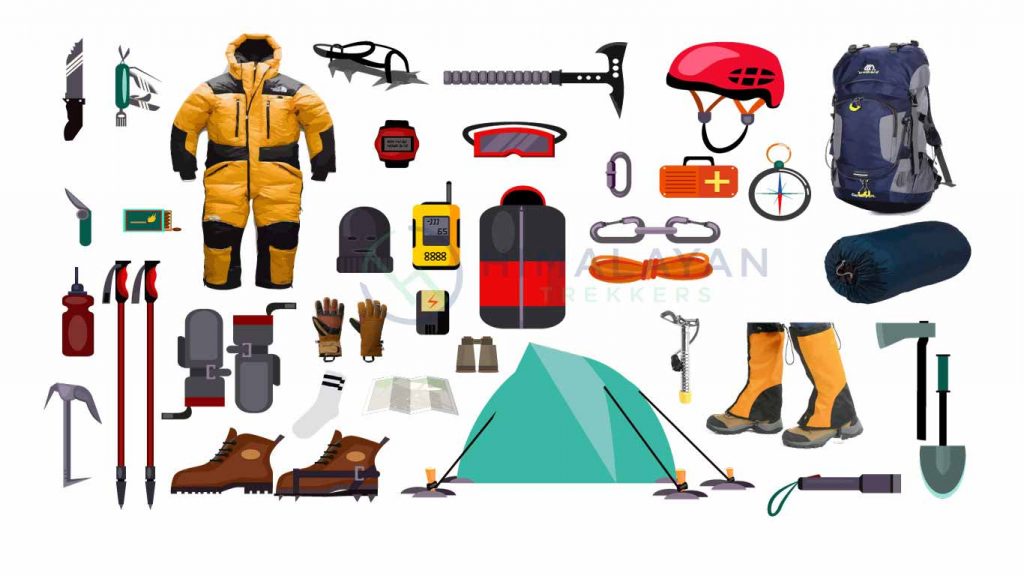
During the walk, a well-equipped backpack is important for transporting personal things and everyday necessities. It should be roomy, light, and have comfortable straps for proper weight distribution. Trekking poles for stability on steep descents and ascents, a water filtration device for clean drinking water, and a thorough first aid pack are also essential. Sun protection, such as sunglasses, sunscreen, and a wide-brimmed hat, is also essential owing to the harsh mountain sun. With limited access to charging stations along the way, trekkers should bring additional camera batteries and a portable power bank to record and share the spectacular moments of their Annapurna Base Camp experience. Trekkers are well-prepared for the difficult terrain if these packing necessities are carefully considered.
Additional Tips
Acclimatize properly: Spend a few days in Pokhara before starting the trek to avoid altitude sickness.
Drink plenty of water: Stay hydrated to combat altitude and exertion.
Respect the environment by removing all waste and leaving no trace on the mountain. Reduce your use of plastic and replace it with biodegradable alternatives. Instead of putting it out in the open, properly dispose of toilet paper in designated pits. Be a responsible trekker and help preserve the Himalayas’ unspoiled beauty.
Hire a trustworthy tour guide: Select a licensed guide who is familiar with the local culture and surroundings. A guide can help you traverse the trails, deal with permissions and logistics, and provide information about the region’s history and traditions. Their local knowledge and skills can enhance your trekking experience greatly.
Accept the challenge: With severe hills and altitude increase, the walk will be physically taxing. The benefits, on the other hand, are infinite. The accomplishment of reaching Annapurna Base
Conclusion
The Annapurna Base Camp trip is a soul-stirring journey that mixes the exhilaration of hiking with the tranquillity of the Himalayan scenery. By following this detailed guide, you’ll be well-prepared to go on this once-in-a-lifetime adventure, making memories that will last long after you’ve descended from the beautiful heights of the Annapurna region.
Tags: abctrek, annapurna, annapurnabasecamptrek


